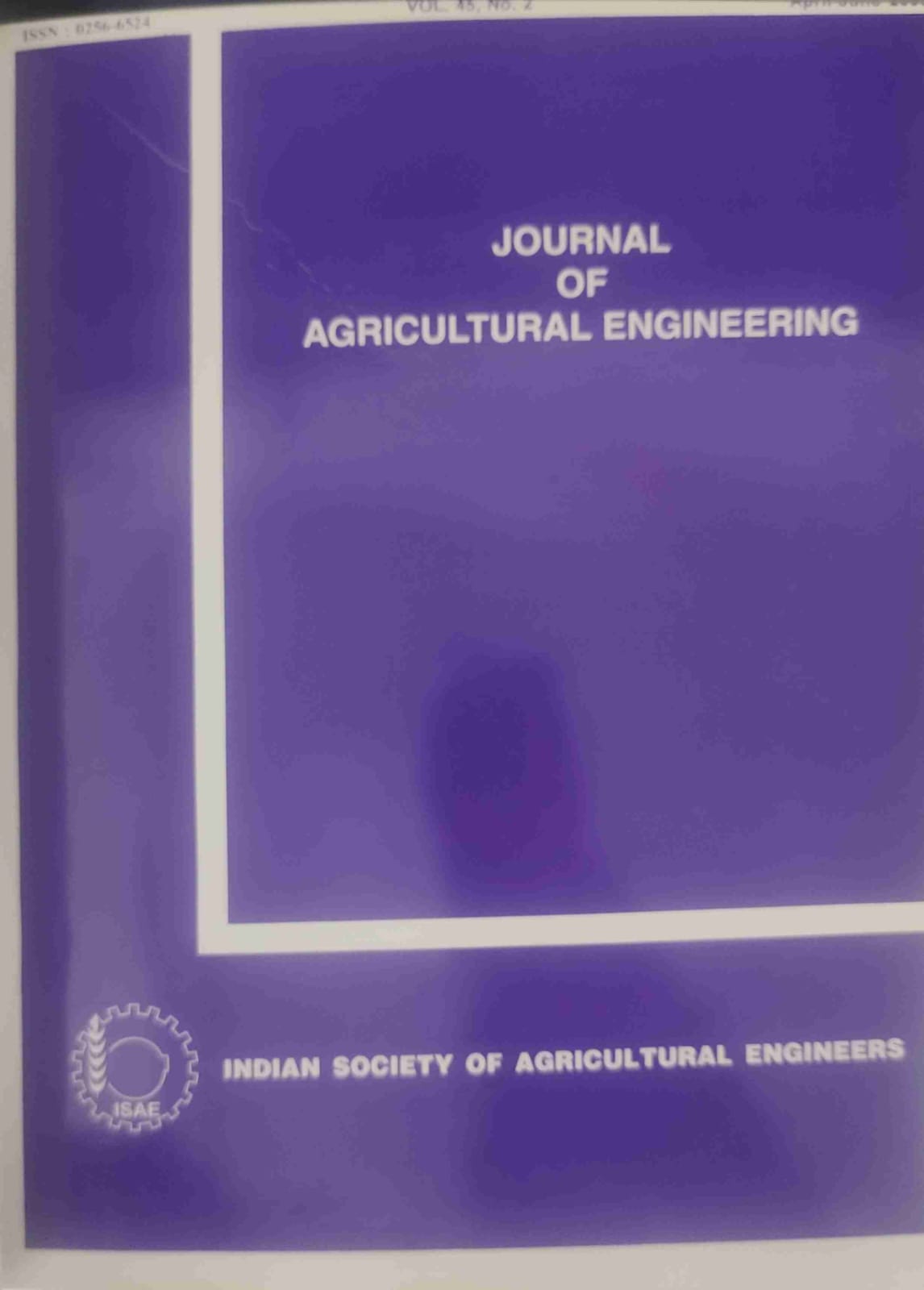Prediction of Density of Fruit Juice Using Neural Networks as Function of Concentration and Temperature
DOI:
https://doi.org/10.52151/jae2008452.1322Abstract
An artificial neural network (ANN) model was used for the prediction of density of fruit juice as a function of concentration and temperature. The various fruit juices considered were peach juice, orange juice, pear juice and malus floribunda juice. The density data used during modeling were taken from the literature for a wide range of concent ration (10-71o Brix) and temperature (Q-80°C). ANN topologies were evaluated while developing the optimal ANN model. The optimal ANN model consisted of two hidden layers with four neurons in the first and three neurons in the second hidden layer. This model was able to predict density with a mean sum square error of 0.0004 g2/cm6
References
Aires-De-Sousa J. 1996. Verifying wine origin: a neural network approach. American J. Enology and Viticulture, 47,410-414.
Afaghi M; Ramaswamy H S; Prasher S O. 200 I. Thermal process calculations using artificial J neural network models. Food Res. International, 34, 55-65.
Baughman D R; Liu Y A. 1995. Neural Networks in Bioprocessing & Chemical Engineering. Academic press, Sandiego.
Bowen W R; Jones M G; Yousef H N S. 1998. Prediction of the rate of crossflow membrane ultrafiltration of colloids: a neural network approach. Chemical Engng. Sci., 53, 3793-3802.
Cepeda E; Villaran M C. 1999. Density and viscosity of Malus floribunda juice as a function of concentration and temperature. J. Food Engng., 41, 103-107.
Fang Q; Bilby G; Haque E; Hanna MA; Spillman C K. 1998. Neural network modeling of physical properties of ground wheat. Cereal Chemistry, 75, 251-253.
Farshad F F; Garber J D; Lorde J N. 2000. Predicting temperature profiles in producing oil wells using artificial neural networks. Engng. Computations, 17, 735-754.
Ibarz A; Miguelsanz R. 1989. Variation with temperature and soluble solids concentration of the density of depeptidised and clarified pear juice. J. Food Engng. 10, 319-329.
Izadifar M. 2005. Neural Network modeling of trans isomer formation and unsaturated fatty acid changes during vegetable oil hydrogenation. J. Food Engng., 66, 227-232.
Horimoto Y; Durance T; Nakai S; Lukow 0 M. 1995. Neural networks vs principal component regression for prediction of wheat flour loaf volume in baking tests. J. Food Sci., 60, 429-433.
Hornik K; Stinchcombe M; White H. 1989. Multilayer feedforward networks are universal approximators. Neural Networks, 2, 359-366.
Ni H; Gunasekaran S. 1998. Food quality prediction with neural networks. Food Techno., 52, 60-65.
Rai P; Majumdar G C; DasGupta S; De S. 2005. Modeling the performance of batch ultrafiltration of synthetic fruit juice and mosambi juice using artificial neural network J. Food Engng., 71, 273-281.
Ramesh M N; Kumar M A; Rao S. 1996. Application of artificial neural networks to investigate the drying of cooked rice. J. Food Process Engng., 19, 321-329.
Ramos AM, Ibarz A; 1998. Density of juice and fruit puree as a function of soluble solids content and temperature. J. Food Engng., 35: 57-63.
Ruan R; Almaer S; Zhang J. 1995. Prediction of dough rheological properties using neural networks. Cereal Chern., 72, 308-311.
Xie G; Xiong R. 1999. Use of hyperbolic and neural network models in modelling quality changes of dry peas in long time cooking. J. Food Engng., 41, 151-162.














